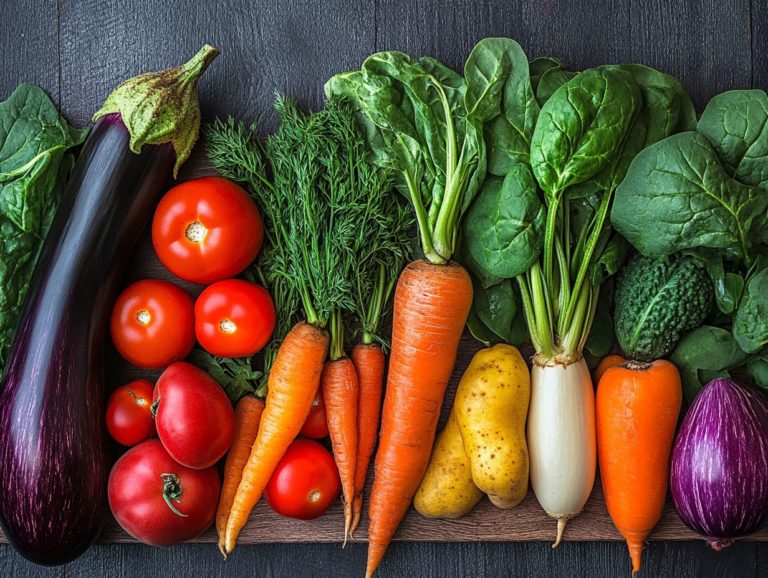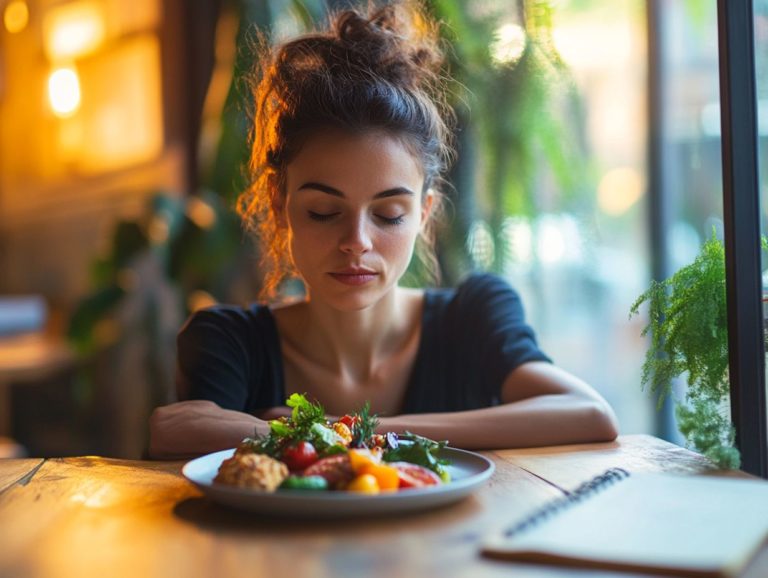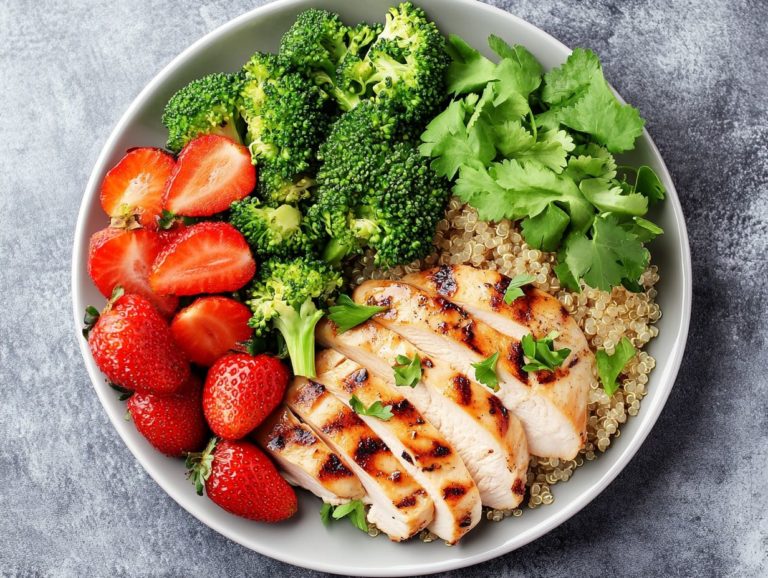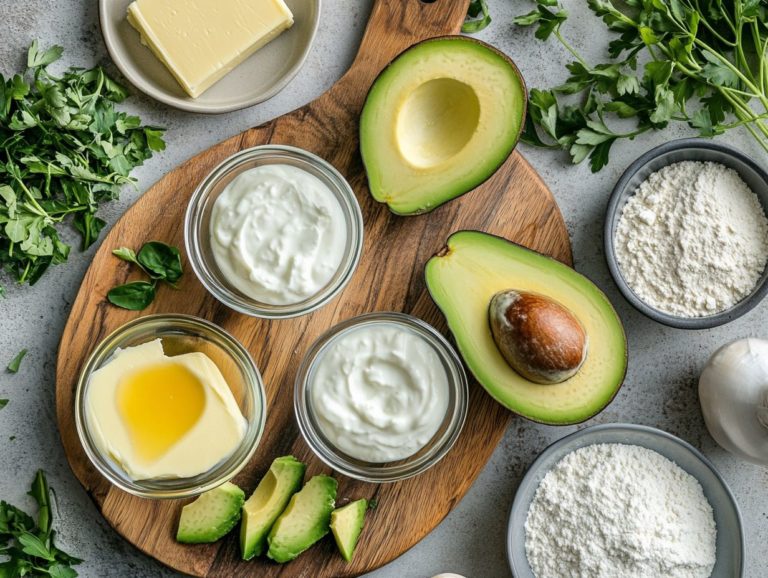5 Creative Ways to Use Leftovers
Leftovers may sometimes feel like a chore, but they re actually a hidden gem brimming with culinary possibilities. Instead of resigning yourself to yet another uninspired reheated meal, get ready to transform your leftovers with these five exciting ideas!
Discover innovative ways to repurpose leftover meat, vegetables, and grains into mouthwatering dishes like tacos, frittatas, and stir-fries. You ll also find essential tips on how to store leftovers safely and rejuvenate their flavor, ensuring they taste as good as new. Embrace the opportunity to minimize food waste while unleashing your delicious creativity!
Contents
- Key Takeaways:
- 1. Turn Leftover Meat into Tacos or Sandwiches
- 2. Transform Leftover Vegetables into a Frittata or Quiche
- 3. Make a Soup or Stew with Leftover Meat and Vegetables
- 4. Create a Stir-Fry Using Leftover Rice and Vegetables
- 5. Use Leftover Pasta to Make a Casserole or Pasta Salad
- How to Properly Store Leftovers for Future Use?
- Frequently Asked Questions
Key Takeaways:
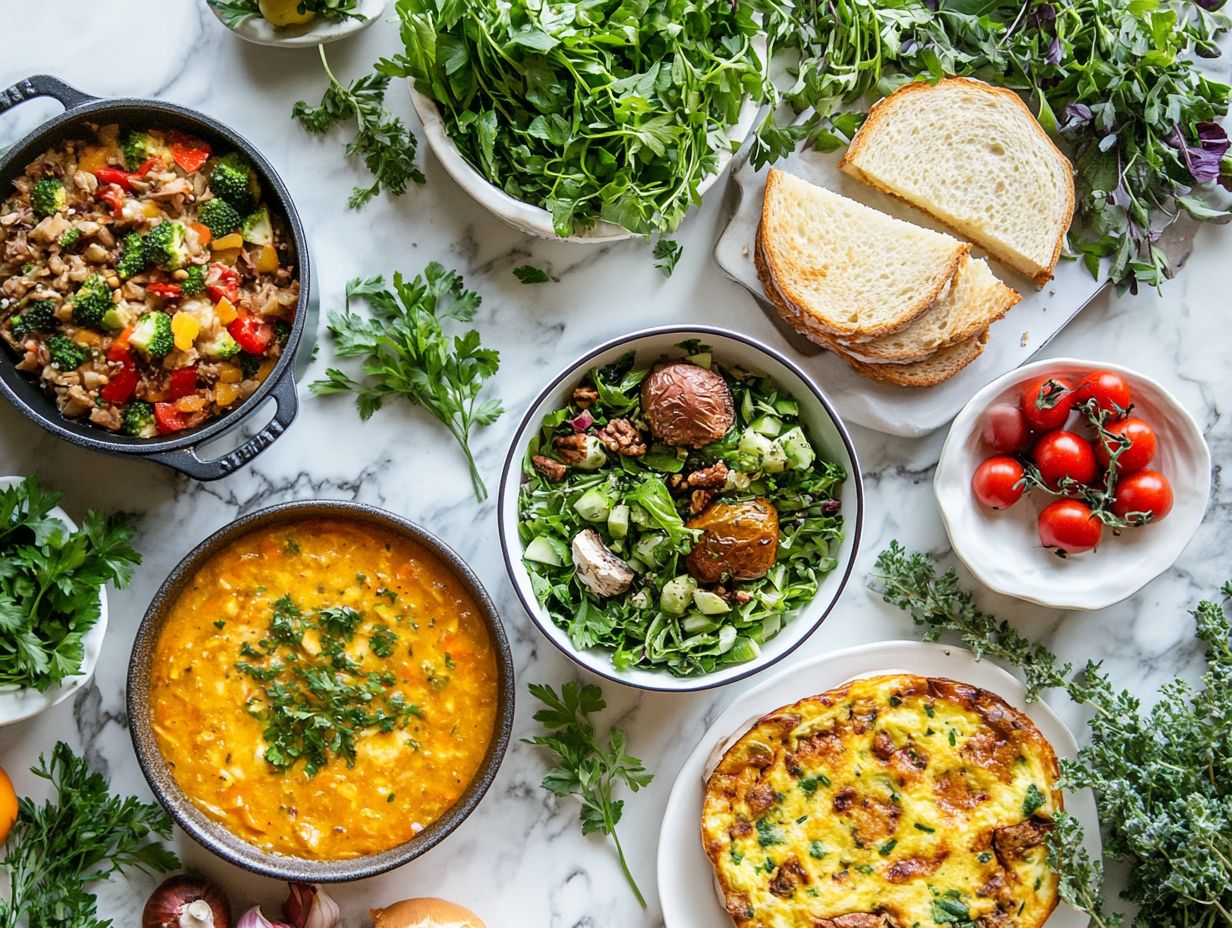
Transform leftovers into new meals like tacos or sandwiches for a quick and easy meal.
Get creative with leftover vegetables by making a frittata or quiche for a healthy and delicious breakfast or lunch option.
Combine leftover meat and vegetables to make a tasty soup or stew, perfect for a cozy and comforting meal.
1. Turn Leftover Meat into Tacos or Sandwiches
Transforming leftover meat into tacos or sandwiches is not just a creative effort; it s a smart and budget-friendly approach to minimize food waste while enjoying nutritious meals. This culinary art breathes new life into the remnants in your fridge, inviting you to experiment with a blend of ingredients and seasonings inspired by the esteemed BBQ expert, Heath Riles.
Whether you choose brisket tacos or ham sandwiches, these recipes save you time while ensuring every bite is packed with energy and freshness.
To elevate your creations, think about incorporating vibrant vegetables like peppers, onions, or even avocados to add texture and essential nutrients. A touch of cheese can introduce richness and that delightful gooey consistency, while fresh herbs or spicy sauces infuse each dish with a distinctive flair.
You can enhance flavors by saut ing or broiling leftover meats to intensify their taste and create a delicious crust that adds depth. Mixing spicy sauces or creamy spreads opens the door to endless flavor profiles, making each taco or sandwich a unique experience that caters to all tastes.
2. Transform Leftover Vegetables into a Frittata or Quiche
Transforming leftover vegetables into a frittata or quiche is a brilliant way to create a nutritious and delicious meal while minimizing food waste. This skill is not only practical; it s essential for every home cook.
By using various ingredients, you can showcase your culinary creativity and experiment with exciting flavor combinations. Whether you work with potatoes, seasonal vegetables, or cheese, these dishes are perfect for breakfast, lunch, or dinner, making them versatile and budget-friendly.
To prepare a frittata, start by whisking eggs in a bowl, adding a splash of milk for that creamy texture, and then incorporating your leftover vegetables. Saut everything in an oven-safe skillet until tender, seasoning with salt, pepper, and perhaps a pinch of paprika or some fragrant herbs like thyme to add an extra layer of depth.
Pour the egg mixture over the saut ed vegetables, cooking on the stove until the edges begin to set before transferring it to the oven to finish cooking.
For a quiche, mix eggs with cream, incorporate your vegetables along with cheese feta or cheddar work wonders and pour everything into a pie crust. Bake until golden, allowing the flavors to meld beautifully.
Embrace the adventure of any leftover in your refrigerator; kale, roasted peppers, or even mushrooms can come together in delicious harmony.
3. Make a Soup or Stew with Leftover Meat and Vegetables
Utilizing leftover meat and vegetables to craft a soup or stew is a great way to create a warm, nutritious meal. This approach creatively repurposes what might otherwise contribute to food waste. It opens the door to diverse ingredient combinations and allows you to incorporate homemade stock or sauces that elevate flavor and richness.
Whether you’re simmering chicken and potatoes or brisket with seasonal vegetables, these comforting dishes can become hearty meals for any occasion. To begin, gather any leftover protein, such as roast beef, turkey, or even beans, and dice them into bite-sized pieces.
Combine these with chopped onions, garlic, and aromatic herbs like thyme or bay leaves in a pot to establish a flavorful base. Next, add your choice of stock or broth, opting for homemade if available to amplify the richness.
You can add a splash of wine or a spoonful of soy sauce for more flavor. To thicken the stew, stirring in some flour, cornstarch, or even mashed potatoes will help to create a creamy and rich texture.
Don t forget to season generously with salt and pepper, adjusting as necessary to suit your taste preferences. Let it simmer to meld those flavors beautifully.
4. Create a Stir-Fry Using Leftover Rice and Vegetables
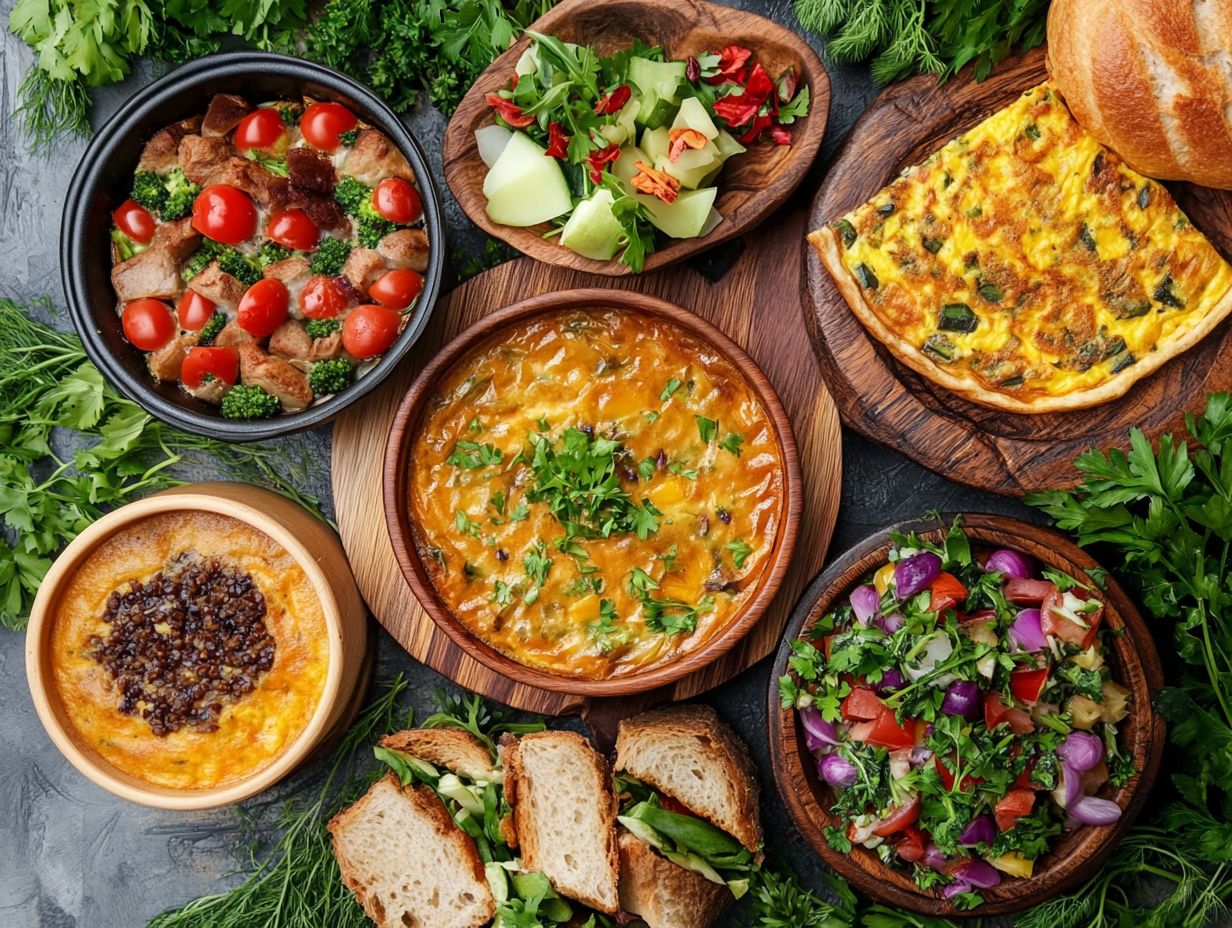
Creating a stir-fry with leftover rice and vegetables is your ticket to a quick meal that minimizes waste and showcases your cooking skills! This fun cooking technique lets you mix many ingredients, whether you choose to add chicken, ham, or a colorful medley of vegetables.
The end result? A dish brimming with flavor and vitality perfect for those times when you need a satisfying meal in a flash, especially suited for your busy lifestyle.
To get started, gather your favorite vegetables, such as:
- Bell peppers
- Broccoli
- Carrots
along with any protein you wish to include, like tofu or shrimp. Heat a drizzle of oil in a hot wok or skillet until it’s sizzling.
Add your chosen protein to achieve that coveted sear. Once cooked, remove it from the pan and set it aside. Next, toss in your vegetables, beginning with those that take longer to cook, like carrots, then follow up with quicker-cooking options.
Stir constantly to ensure everything cooks evenly while preserving the fresh crunch of your ingredients. Finally, return the protein to the pan, adding a splash of soy sauce, garlic, or ginger for an extra layer of flavor.
This method boosts the taste and keeps the texture bright, resulting in a delightful meal that s as visually appealing as it is delicious!
5. Use Leftover Pasta to Make a Casserole or Pasta Salad
Using leftover pasta to whip up a casserole or a pasta salad transforms potential food waste into a delightful and nutritious meal that s perfect for any occasion.
The beauty of pasta lies in its versatility, allowing you to mix and match a plethora of ingredients think cheeses, vegetables, and sauces to create culinary masterpieces that even the pickiest eaters will adore.
Whether you choose to bake a comforting casserole or serve a refreshing pasta salad, these recipes offer a straightforward yet effective way to plan your meals while making the most of your fridge’s contents.
To begin, take stock of what you have on hand. For a casserole, combine leftover pasta with an assortment of vegetables, protein sources like chicken or beans, and a rich sauce. This creates a comforting dish that turns leftovers into something special, especially when topped with cheese and baked to golden perfection.
Conversely, if you’re in the mood for something lighter, a pasta salad might be just the thing. Picture cold, cooked pasta mingling with fresh veggies, vibrant herbs, and a zesty dressing each bite bursting with flavor, making it a perfect side or main dish.
Enhance it further by tossing in olives, feta cheese, or roasted nuts, and you ll have a delightful centerpiece that s sure to impress at any gathering or make an ordinary weeknight dinner feel special. Try it tonight for a delicious meal!
How to Properly Store Leftovers for Future Use?
Properly storing your leftovers is essential for maintaining their freshness and safety. This ensures that your home-cooked meals can be enjoyed later without contributing to food waste.
Select the right storage containers. Use airtight containers to keep food fresh. Shallow containers cool food quickly, preventing bad bacteria from growing.
By following effective storage techniques, such as keeping food at the right cold temperature and understanding portioning, you can extend the life of your leftovers while keeping your meals nutritious and delightful.
For example, use airtight glass or plastic containers for soups and sauces to prevent moisture loss and keep flavors intact. Label your containers with dates to easily identify meals, minimizing the chances of forgotten leftovers lurking in the fridge.
Don’t overlook temperature control. Refrigerate foods promptly within two hours of cooking to enhance their shelf life.
By mastering these storage methods, you can enjoy meals that are safe and bursting with flavor.
What Are Some Other Creative Ways to Use Leftovers?
Get creative with your leftovers! Discover fun ways to enjoy them. Transform leftover meats into hearty sandwiches or tacos, or add vegetables to a breakfast omelet the possibilities are endless.
These innovative recipes not only add excitement to your meals but also encourage a cooking mindset that values creativity and sustainability.
For example, why not turn leftover roasted chicken into a flavorful curry? Just saut it with spices, coconut milk, and fresh vegetables for a delightful dish.
Day-old rice? Make delicious fried rice by tossing it with eggs, soy sauce, and leftover proteins or veggies. Stale bread can become savory bread pudding or crunchy croutons, enhancing your salads and soups.
By thinking outside the box, you can turn mundane leftovers into delightful meals that tantalize your taste buds and positively impact the environment.
How Can One Make Sure Their Leftovers Are Safe to Eat?
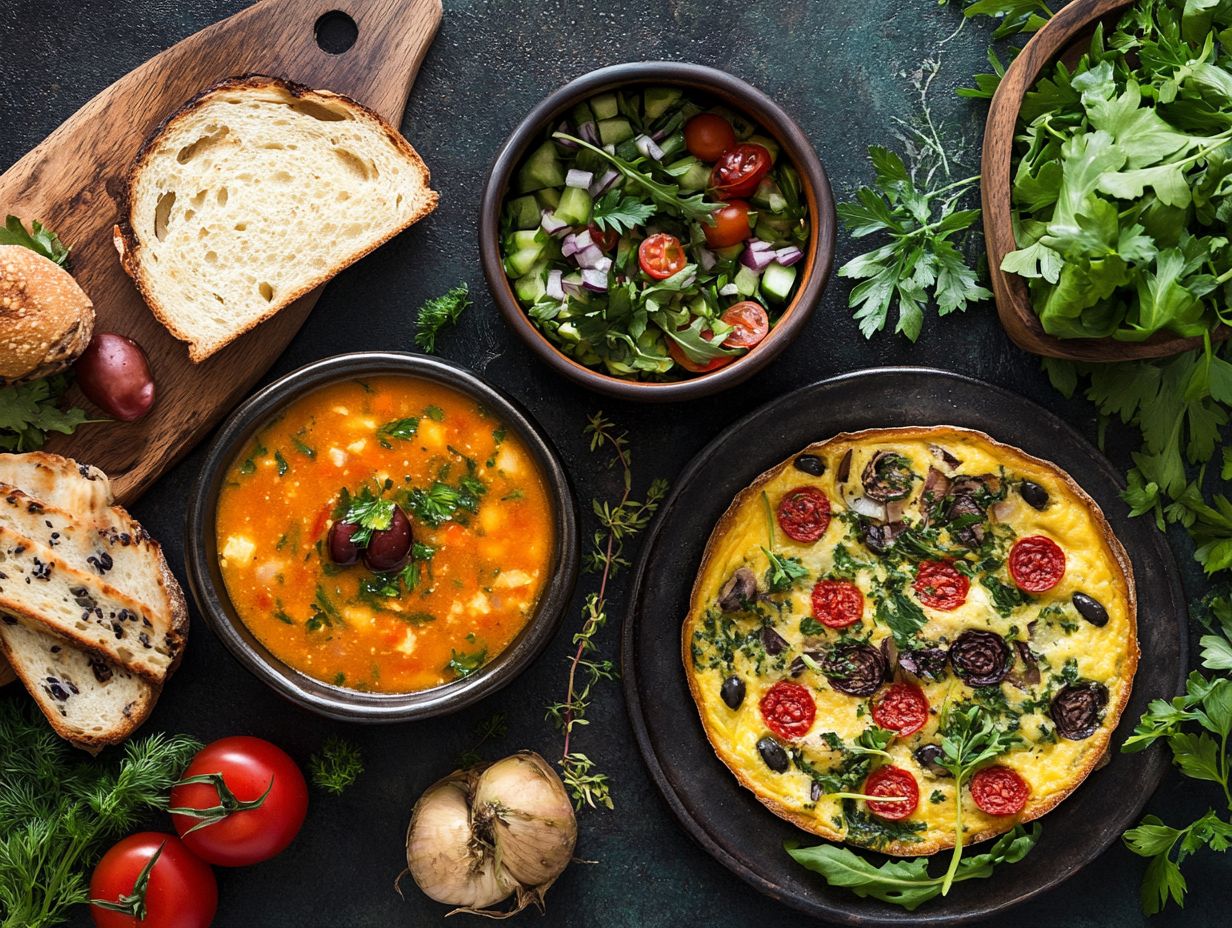
Keep your leftovers safe by storing them in airtight containers and checking for discoloration or bad smells. Most cooked dishes should be eaten within three to four days when stored in the refrigerator. Soups and stews may last up to a week.
Regularly check for signs like unusual odors or slimy textures. If a dish smells off or looks questionable, it s best to discard it.
Maintaining a close watch on temperature is key to preventing harmful bacteria from multiplying, ensuring your meals remain delicious and safe for you and your loved ones.
Don t let those leftovers go to waste transform them into exciting meals today! Share your own leftover recipes or tips with us!
What Are Some Common Mistakes People Make When Using Leftovers?
Many home cooks often stumble into common traps when it comes to using leftovers. This can lead to unnecessary food waste and dull meals that could easily become delicious meals.
Issues like improper storage, neglecting to weave leftovers into meal planning, or skimping on seasoning can seriously detract from your dining experience.
Identifying these missteps can elevate your cooking skills while making the most of those leftover ingredients.
Many people overlook the importance of storing food at the correct temperature, which can lead to spoilage and contamination. To counter this, ensure that you refrigerate your leftovers promptly within two hours after cooking. Doing this can remarkably extend their shelf life.
Adopting a well-organized meal planning system can seamlessly integrate food remnants into your upcoming meals, transforming what might have been tossed aside into delightful culinary creations.
Get excited about creative seasoning! Fresh herbs and zesty dressings can transform your dishes, turning them into enjoyable meals that celebrate both sustainability and flavor.
How Can One Incorporate Leftovers into Their Meal Planning?
Incorporating leftovers into your meal planning is a savvy strategy for cutting down on food waste while keeping your cooking nutritious and budget-friendly.
By thoughtfully using leftover ingredients in new recipes, you can craft a diverse weekly menu that minimizes waste and maximizes flavor. This approach streamlines your grocery shopping and invites you to get creative in the kitchen.
To kick things off, set specific days for leftover-based meals to foster consistency in your meal prep routine.
One exciting way to enhance variety is to transform the same ingredient across different cuisines. For example, that roasted chicken could easily become tacos, soups, or salads.
Keep a list of versatile ingredients, like grains and vegetables, on hand for easy substitutions and inventive combinations. Don t shy away from experimenting with seasoning; minor tweaks can create a brand-new taste profile, making each meal feel fresh and exciting.
With a dash of creativity and a sprinkle of foresight, utilizing leftovers can evolve into a delightful culinary adventure that beautifully honors both taste and sustainability.
What Are Some Tips for Making Leftovers Taste Fresh Again?
Reviving leftovers to taste fresh is essential for maintaining enjoyment in your meals and minimizing food waste. Several techniques can help you achieve this goal.
Using various seasoning methods, reheating techniques, and ingredient enhancements can transform previously prepared dishes into exciting new meals. Whether you re adding fresh herbs, creating a new sauce, or experimenting with different cooking styles, these tips will ensure your leftovers remain delicious and appealing.
Incorporating elements like a splash of citrus or a sprinkle of zest can invigorate flavors and brighten up a dish dramatically.
When reheating, opting for a skillet instead of a microwave can yield a crispy texture that brings a delightful crunch back to many items, making them feel freshly cooked.
Try adding a sprinkle of Parmesan, a dash of hot sauce, or even a handful of nuts to elevate your dining experience. View leftovers as a blank canvas, inviting creativity into every meal.
Frequently Asked Questions
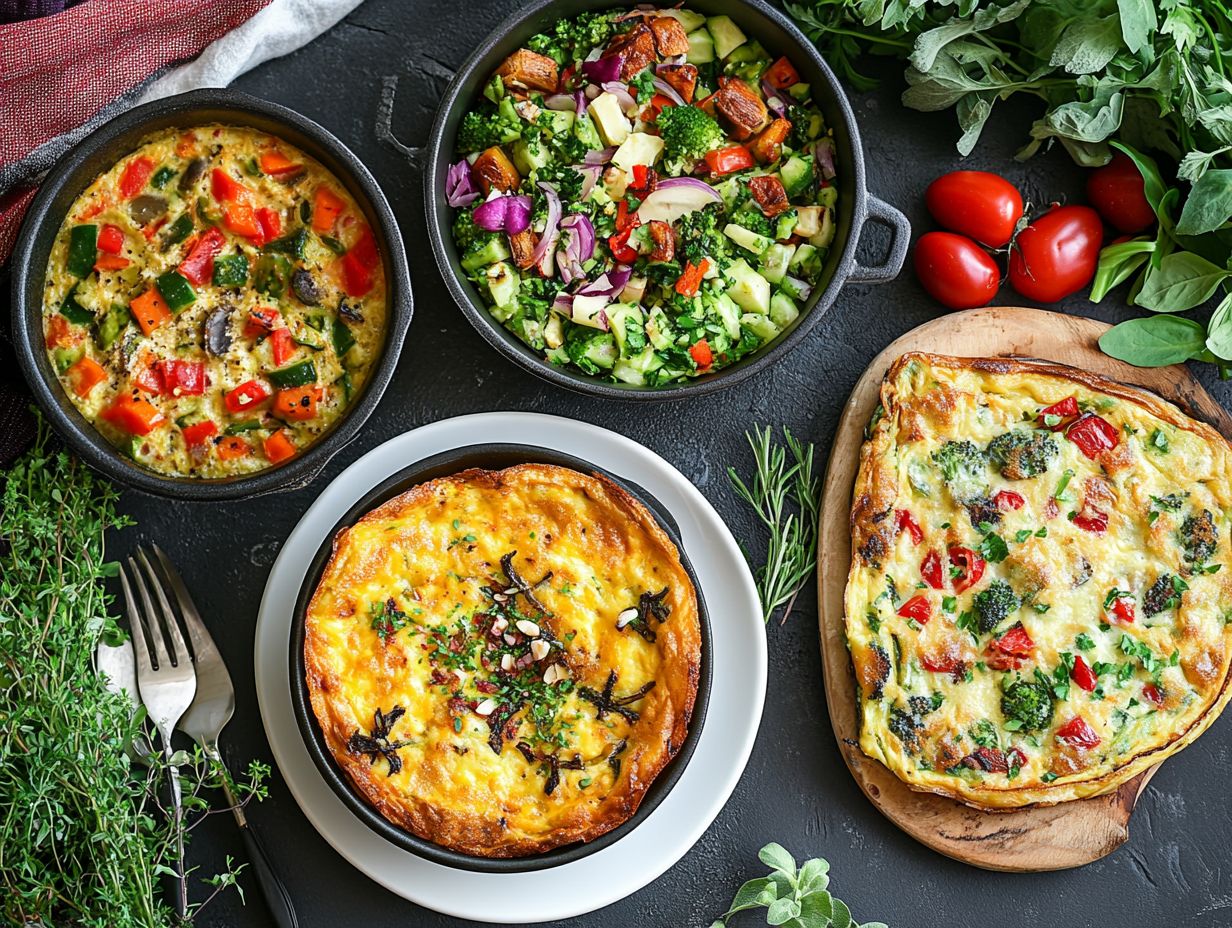
What are some creative ways to use leftovers?
- Turn them into casseroles or one-pot meals.
- Make a stir-fry or fried rice using leftover meat and vegetables.
- Use them as toppings for homemade pizzas or quesadillas.
- Blend them into a soup or smoothie.
- Create a breakfast hash with leftover meat and potatoes.
- Make a savory bread pudding with leftover bread, vegetables, and cheese.
Can I freeze leftovers for later use?
Yes, you can freeze leftovers for later use. Be sure to store them in airtight containers or freezer-safe bags to prevent freezer burn, which happens when food is improperly sealed, causing it to dry out and lose flavor. Thaw them in the fridge before reheating.
Start transforming your leftovers into amazing meals today!
What are some tips for storing leftovers?
Properly storing leftovers is key to avoiding sickness from food. Always use airtight containers or wrap food tightly in foil.
Label your containers with the date. Consume leftovers within 3-4 days and reheat them thoroughly before eating.
How can I use leftover vegetables in creative ways?
- Blend them into a delicious soup or sauce.
- Make a vegetable frittata or quiche.
- Use them as a filling for omelets or breakfast burritos.
- Create a veggie-packed fried rice or stir-fry.
- Add them to a salad or wrap for extra nutrients.
- Craft a scrumptious vegetable lasagna or stuffed peppers.
Is it safe to use leftover meat in other dishes?
Yes! If the meat is stored properly and reheated thoroughly, it’s safe to use in other dishes. Always check for any signs of spoilage before consuming.
How can I make my leftovers taste better?
- Enhance flavor with fresh herbs and spices.
- Add sauces or marinades for moisture and taste.
- Incorporate them into new cuisines or dishes for a fresh flavor.
- Include a crunchy element, like breadcrumbs or nuts.
- Mix and match different leftovers to create something unique.
- Serve with a side of homemade dressing or dip for additional flavor.


